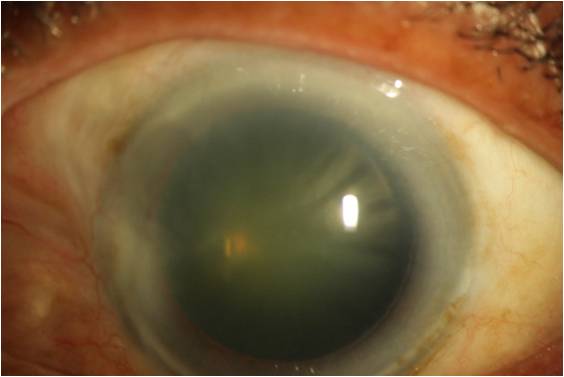Cataract

The condition which leads to decrease in vision due to the clouding of lens in the eye is called Cataract. The onset of the condition is usually slow and can affect one or both the eyes. The condition is caused by deposition of clumps of protein or yellow brown pigmentation in the lens of the eye which leads to the reduction of the light transmitted to the retina which is located at back of the eye.
This results in night visions being impaired and also affects the sharpness of colour images which eventually makes it difficult for the individual to perform their daily activities. Cataract is the most common cause of preventable blindness in India and other third world countries.
 Causes
Causes
The most common cause of cataract is age but it may also occur in cases of blunt trauma to the eye,or radiation exposure, poor nutrition etc. Another leading cause is diabetes. In rare cases, the condition may be congenital meaning that is present from birth.
 Symptoms
Symptoms
The symptoms depend on the type of cataract. The most common symptoms are reduction of vision or a complain of glare. Some of the other common symptoms include a need to change the glasses frequently or colour halos which is caused due to the hydration of the lens..
 Diagnosis
Diagnosis
Diagnosis can very simply be made via an eye examination. The severity of the condition is judged by a visual acuity test which in common language refers to testing the clarity of vision.
 Treatment
Treatment
The treatment for Cataract requires a simple surgery under local anaesthesia. During the surgery, the affected lens is removed and is replaced with an artificial lens, known as the intra-ocular lens, which stays in the eye permanently.
Some of the salient features of the surgery are as follows:
- Cataract surgery is one of the most common surgical procedure in the world, while in India also it is the commonest procedure.
- Cataract surgery is considered to be a very safe surgical procedure.
- Cataract surgery is a very short procedure and usually lasts between 15 to 20 minutes.
- Cataract surgery is performed under local or topical (without any injection) anesthesia. In both cases, the patient is awake. Now a day, majority of the surgeries take place under topical anaesthesia.
- The modern surgical procedure is termed as Phacoemulsification.
- The visual rehabilitation of the eye post the surgery is very quick and typically is within only a few days. In an otherwise normal eye, 100% and sometimes even better vision is achieved very quickly.
- It is a proven fact that life expectancy increases by about 5 years in cataract operated elderly individuals.
Technology
In this time and age, cataract surgery involves the usage of ultrasonic equipment, the procedure is known as Phacoemulsification.
Some of the features of the procedure are as follows:
- An ultrasonic hand piece breaks the cataract into minuscule pieces and aspirates it out of the eye
- The ultrasonic hand piece vibrates 28 to 40 thousand times a second
- The size of the incision made is as small as 2.2 millimeters
- An intra-ocular lens is placed inside the eye in place of the cataract.
- In the Phacoemulsification procedure, the lenses used are usually made of acrylic or silicon. They are foldable which can pass through a small 2.2mm incision and open inside the eye. The diameter of the lens is 6 millimetres.
- For crisp and desired visual outcome of cataract surgery apart from good and appropriate lens, correct pre-operative assessment of eye is very essential. An ultrasonic OpticalBiometer is the most crucial machine for intra-ocular lens measurement. OCT and Applanation tonometry are other essential tests done prior to surgery.
© Vibrant Eye Care. All Rights Reserved.